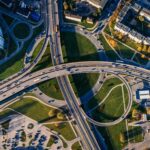In community engagement, we often talk about involving the community in decision making, from providing feedback on options, to deliberating in forums or on citizens juries, or even voting.
But one area where I predict we will see greater community involvement will be empowering the community to gather data.
Rather than just asking people for their opinions, we can ask them to gather evidence.
This prediction is based on five trends:
- New technology – lower costs, new software and wearable technology will make it cheaper and easier to empower the public
- Mobile apps – photos, videos, and scanning software means we can gather data in many formats anywhere anytime
- Cloud-based storage – means the public can upload from the field, and we can track community input 24/7
- Community willingness – in an age of wicked problems and a new global mindset, the public increasing wants to help if given the tools
- An increasing demand for evidence, paradoxically counterbalanced by more constrained budgets – governments in particular will need to be smarter about gathering information
We’ve already started to see this in limited arenas including photography and uploading photos of potholes, photography and recording information tree health, being empowered by construction companies to record and track noise, and most notably in Nepal following the devastating earthquake in April 1.
Thousands of people volunteered through the Humanitarian OpenStreetMap wiki to rapidly examine 14,000square kilometres of satellite images of earthquake-affected areas and tag damaged roads and buildings to help disaster relief and humanitarian teams working on the ground in Nepal.
Within 23 days of the earthquake, more than 4,300 volunteers made 86,000 edits to the OpenStreetMap, including adding up to 30,000 roads and 240,000 buildings. Of those volunteers, at least 2,900 were new mappers to OpenStreetMap.
The potential is endless, from mapping flora and fauna, to measuring environmental impacts, mobilizing during natural disasters, or through study circles to gather information from the grassroots.





